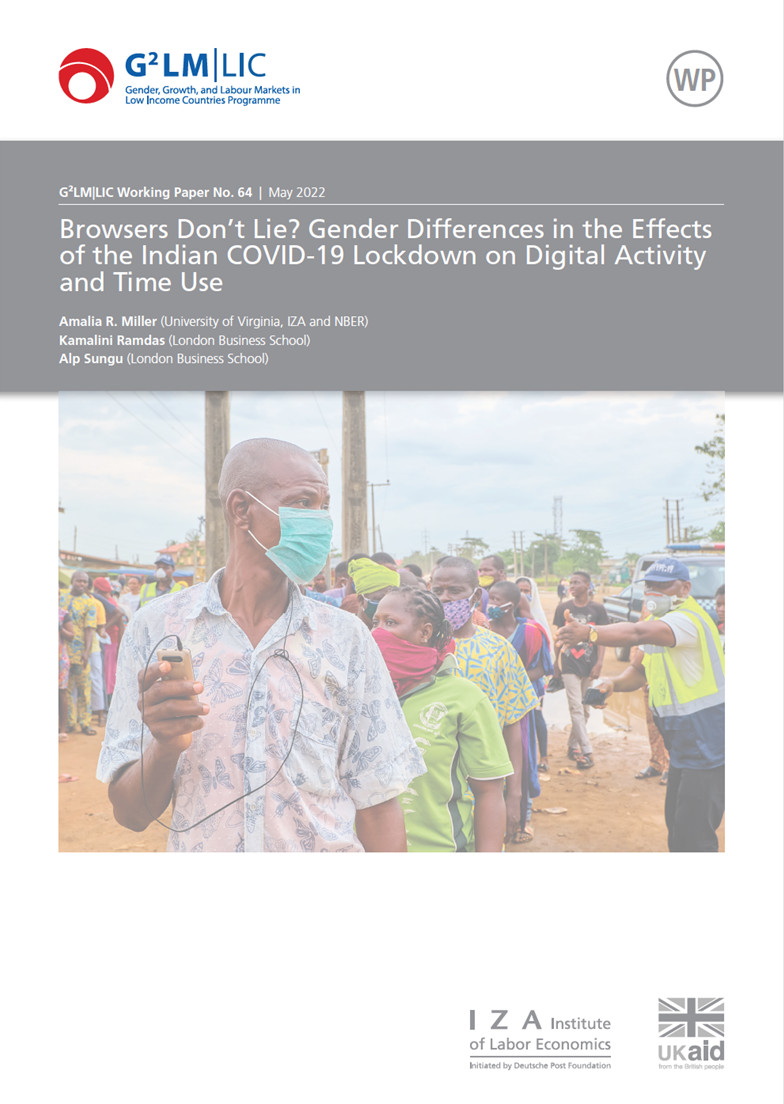We measure the digital impact of the initial Indian COVID-19 lockdown using an online survey coupled with consensually provided browser history records from over 1,000 individuals, spanning over 30 million website visits. Both men and women in our sample dramatically increased their internet activity during the lockdown, which reflects the heightened importance of digital access, but men’s activity increased by significantly more. Gender differences are present overall and for key categories including leisure, production, video streaming and social media. The exception is for self-investment through online learning websites and educational YouTube videos, where men and women had similar significant increases. Among full-time employed respondents, women’s lower browser usage is mainly in leisure browsing, while it is concentrated in productive activities among part-time workers and non-workers. The lockdown also saw a significant reduction in women’s online job search, alongside a significant increase in men’s, with larger effects among likely job seekers, indicating potentially persistent harm to women’s employment. The gender gap is larger among parents, consistent with increased childcare obligations as the driver. Yet in our survey, fathers self-reported significantly larger increases in childcare time than mothers. This relative increase in paternal childcare was not corroborated in partners’ reports or in childcare-related browser usage, which we identify leveraging machine learning methods to analyze text from website titles and YouTube video descriptions. The inconsistency within the self-reported data and contrast with the digital trace data underscore the value of accessing objective “digital footprint” records to gain insight into time use and activity.
